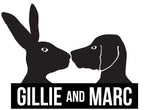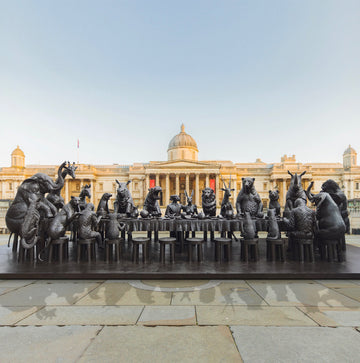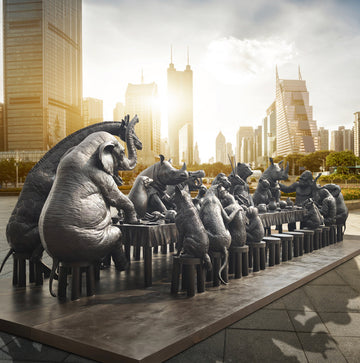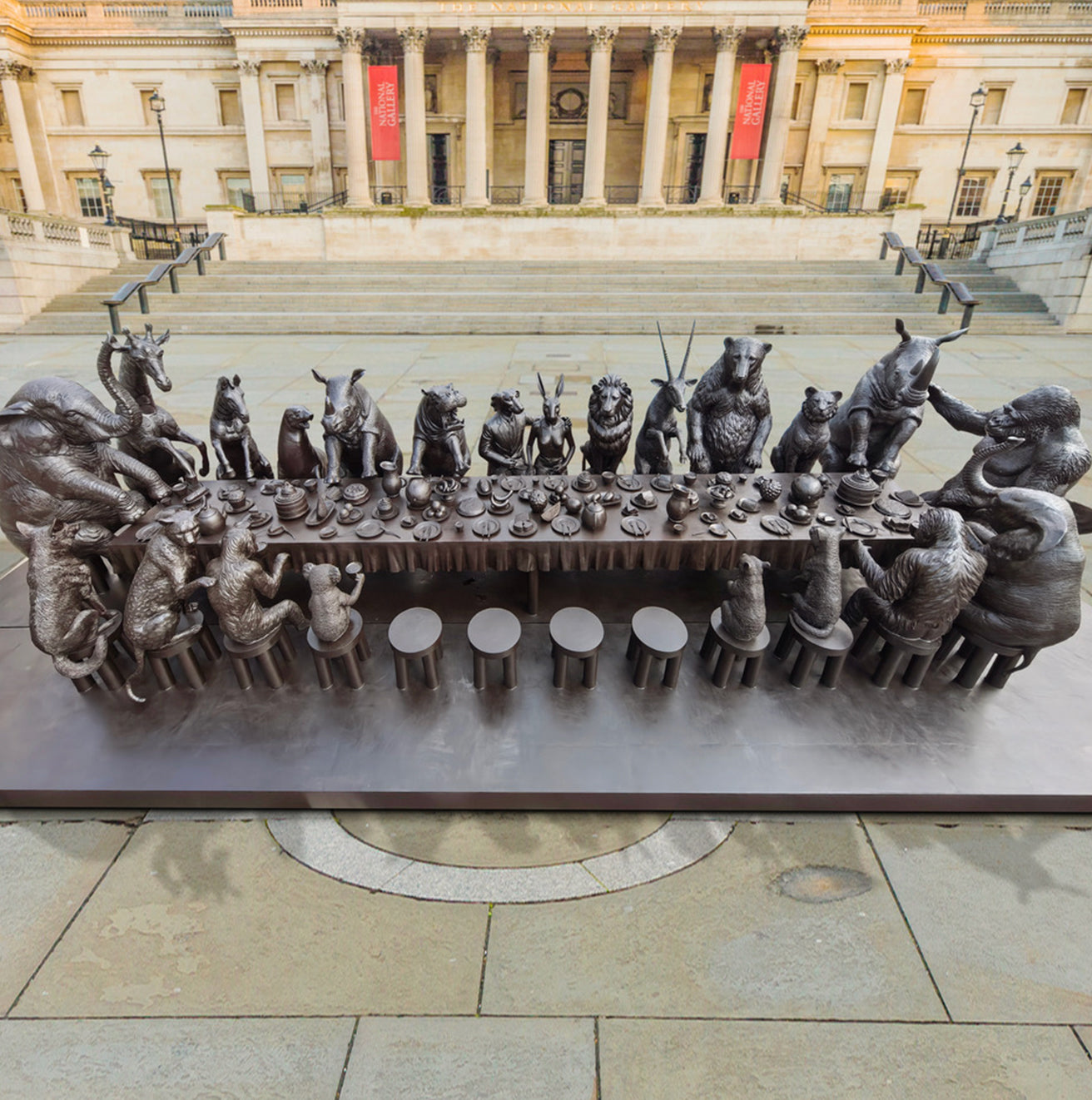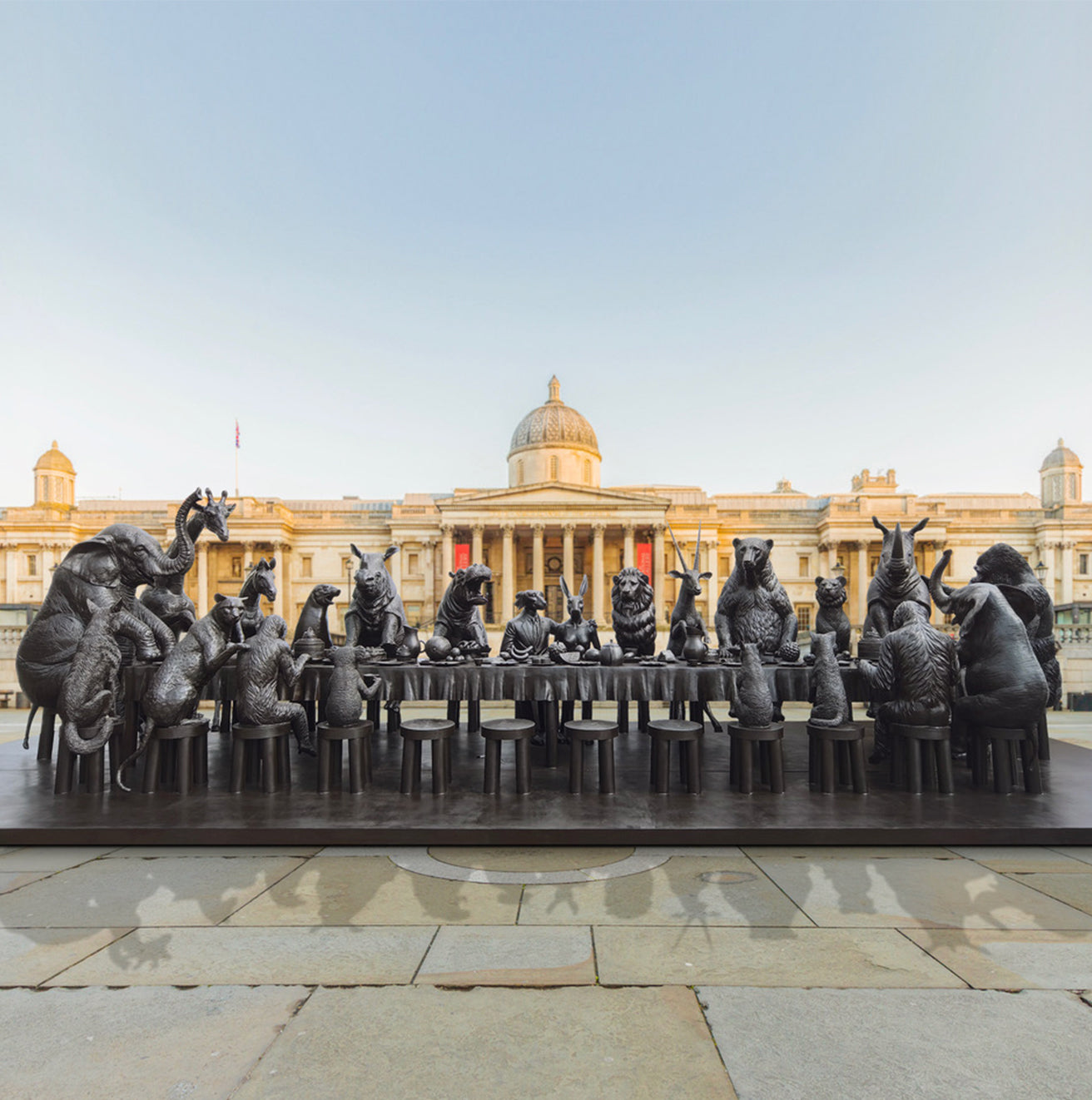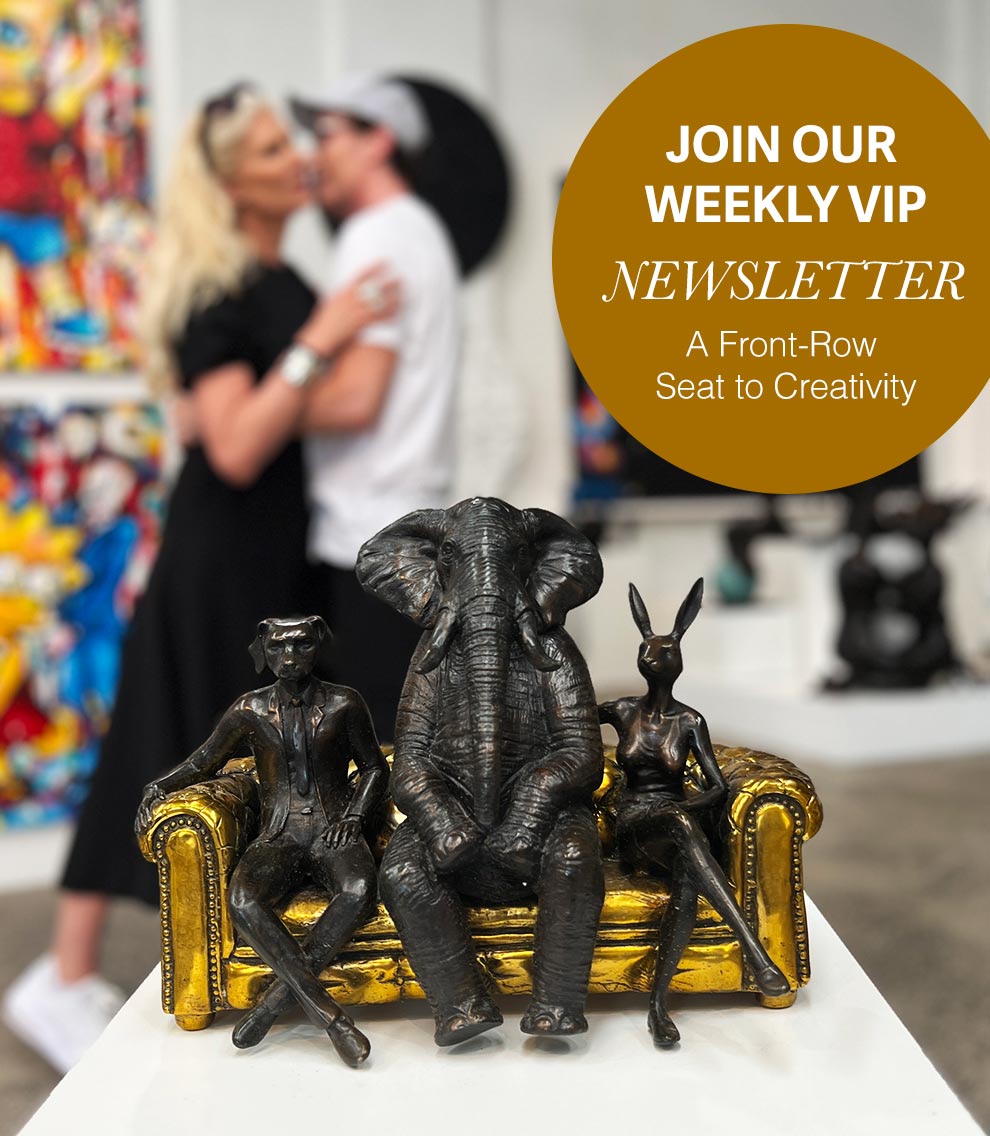Dimensions
Assembled Sculpture:
98.8 x 413.4 x 137.8 inches (H x L x W) 13,652 lbs
251 x 1050 x 350 cm (H x L x W) 6193 kg
Sculpture Back:
98.8 x 413.4 x 86.6 inches (H x L x W) 9,843 lbs
251 x 1050 x 220 cm (H x L x W) 4463 kg
Sculpture Front:
74 x 413.4 x 51.2 inches (H x L x W) 3,810 lbs
188 x 1050 x 130 cm (H x L x W) 1730 kg
Medium
Bronze
Style
Contemporary Sculpture, Wildlife, Functional Art
Edition Number
/10
Description
‘The Wild Banquet’ by internationally renowned artists Gillie and Marc features a banquet table full of delicious food hosted by internationally beloved hybrid characters Rabbitwoman and Dogman. Sharing their table with twenty of the most endangered animals in the world they are opening their hearts to the wild world promising to protect them from the threat of extinction. When we sit and share a meal we share friendship and support. With four empty seats at the table you can join the family of love becoming a protector of wildlife and saving many species from the threat of extinction. This is part of the broader ‘Love The Last’ project a social movement driven by public art to raise awareness funds and support for endangered animals across the world encouraging people to take action before we lose these animals forever.
Will you join us?
Rabbitwoman and Dogman tell the autobiographical tale of two opposites coming together as best friends and soulmates. This beloved pair of characters work as our conduit with wildlife, helping us find joy in nature and rekindle our connection with the wild. In the last 50 years, 70% of the planet’s wildlife has been lost. We must act now to save them. Share your own photo with the hashtag #LoveTheLast and join the campaign for conservation.
The Animals
The twenty endangered animals include; African elephant, Masai giraffe, Grevy's zebra, sea lion, Javan Rhino, hippo, lion, oryx, polar bear, Bengal tiger, white rhino, mountain gorilla, baby African elephant, orangutan, sand cat, wombat, koala, chimpanzee, cheetah, red wolf. They have each been invited to the party as representatives of some of the best-known species in the world. And yet they all are dangerously close to the same threat, extinction.
African Elephant: The African elephant, renowned for its intelligence and social bonds, confronts significant threats like poaching and habitat loss. Conservation efforts focus on anti-poaching measures, protected areas, and community involvement to secure their habitats and safeguard the future of these majestic giants.
Masai Giraffe: The Masai giraffe, a striking presence in African savannas, faces habitat degradation and human-wildlife conflict. Conservation initiatives concentrate on preserving their habitats, engaging local communities, and implementing measures to ensure the continued existence of this distinct giraffe species.
Grevy's Zebra: Grevy's zebra, characterized by its unique stripes, contends with habitat loss and competition for resources. Conservation strategies emphasize habitat preservation, community partnerships, and monitoring to protect these endangered zebras and contribute to ecosystem health.
Sea Lion: Sea lions play a crucial role in marine ecosystems as top predators, helping to maintain the balance of fish populations and contributing to overall biodiversity. Unfortunately, they are facing endangerment due to various factors such as habitat loss, pollution, climate change, and interactions with humans, highlighting the urgent need for conservation efforts to protect these charismatic creatures and the delicate ecosystems they inhabit.
Javan Rhino: The Javan Rhino, critically endangered, requires focused conservation to combat habitat loss and protect against poaching. Efforts involve habitat preservation, anti-poaching measures, and community involvement to prevent the extinction of this rare rhino species.
Hippo: The hippopotamus, charismatic but perilous, faces a severe threat from poaching. Conservation involves awareness campaigns, legal measures, and international collaboration to protect these creatures and maintain ecological balance in their habitats.
Lion: The African lion, symbolizing strength and majesty, grapples with habitat loss, human-wildlife conflict, and poaching. Conservation strategies employ protected areas, community engagement, and anti-poaching measures to secure their future and maintain biodiversity.
Oryx: Oryx, adapted to arid environments, confront habitat loss and hunting pressures. Conservation efforts focus on habitat restoration, sustainable land management, and community involvement to ensure the survival of these resilient antelopes.
Polar Bear: Polar bears, iconic symbols of the Arctic, face threats from climate change and reduced sea ice. Conservation initiatives emphasize climate action, protected areas, and research to mitigate these threats and secure the future of polar bear populations.
Bengal Tiger: The Bengal tiger, an apex predator, contends with habitat loss and poaching. Conservation strategies include protected areas, anti-poaching efforts, and community engagement to safeguard these majestic big cats and their ecosystems.
Northern White Rhino: The Northern White Rhino, on the brink of extinction due to poaching, requires urgent conservation measures. Efforts include anti-poaching initiatives, habitat protection, and scientific interventions such as assisted reproductive technologies to prevent the loss of this iconic rhino species.
Mountain Gorilla: Mountain gorillas, residing in high-altitude forests, face threats like habitat loss and poaching. Conservation initiatives prioritize habitat protection, community engagement, and international collaboration to ensure the survival of these iconic primates.
Baby African Elephant: Baby African elephants, vulnerable members of their herds, face threats similar to adults. Conservation efforts include protection against poaching, habitat preservation, and research to secure the well-being of these young elephants and contribute to overall herd health.
Orangutan: Orangutans, highly intelligent and arboreal primates, confront habitat destruction and the illegal pet trade. Conservation strategies focus on habitat protection, anti-poaching measures, and rehabilitation programs to secure the survival of these endangered great apes.
Sand Cat: Sand cats are small, elusive felines that inhabit arid regions such as deserts and sandy plains. Despite their ability to adapt to harsh environments, they are endangered due to habitat loss, hunting, and the illegal pet trade, emphasizing the importance of conservation measures to safeguard these unique and resilient creatures.
Wombat: Wombats, unique marsupials in Australia, face challenges such as habitat fragmentation and vehicle collisions. Conservation efforts include wildlife corridors, habitat restoration, and public education to protect these burrowing mammals.
Koala: Koalas, iconic marsupials of Australia, confront habitat loss and diseases. Conservation initiatives involve habitat preservation, disease management, and community engagement to ensure the survival of these beloved tree-dwelling marsupials.
Chimpanzee: Chimpanzees, close relatives of humans, face threats from habitat loss and the illegal pet trade. Conservation strategies include protected areas, anti-trafficking efforts, and community involvement to secure the future of these intelligent primates.
Cheetah: Cheetahs, known for their speed, face threats like habitat loss and poaching. Conservation focuses on securing habitats, mitigating human-wildlife conflict, and anti-poaching measures to ensure the survival of these vulnerable big cats.
Red Wolf: The red wolf, critically endangered, contends with habitat loss and genetic issues. Conservation efforts involve habitat restoration, captive breeding programs, and public awareness to prevent the extinction of this rare North American wolf species.
Artwork Features
Gillie and Marc love working in bronze for many reasons. Bronze is a very hardy material and will last forever. As experts in coloring bronze, Gillie and Marc enjoy experimenting with their sculptures, adding a splash of color to brighten the work, making it even more unique. > Read more
For every purchase of a bronze sculpture you will receive a certificate of authenticity, titled, signed, dated and editioned by the artists.
Care Instructions
Bronze is very easy to clean, allowing you to enjoy your precious sculpture with minimal upkeep. > Read more
Shipping, Returns and Refunds
Please visit this page to learn all about our policies. > Read more
